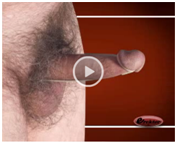A male baby is born at 36 weeks’ gestation following a diagnosis of bilateral hydroureteronephrosis,
thick-walled bladder, and oligohydramnios made at 21 weeks’ gestation.
1- What is the most likely underlying diagnosis?
2- What postnatal radiology investigations are required?
3-What investigations will give information about prognosis?
Discussion
1 The
most likely underlying diagnosis is posterior urethral valves, which
has an estimated incidence of 1 in
5000 to 1 in 8000.
2 The
best postnatal radiology investigations are ultrasound of the kidneys
and urinary tract (whichmay showa
thick-walled, poorly emptying bladder
with upper tract dilatation and
possible aberrant kidney development)
and micturating cystourethrogram.
3 The
best prognostic indicators are the size of kidneys, amount of renal
parenchyma, and corticomedullary
differentiation. Other prognostic indicators
are plasma creatinine at 1 month of
age, measured glomerular
filtration rate (e.g. using
51-labeled chromiumEDTA) at12months of age,
and later formal urodynamic
assessment.
Consider the same case, but with
placement of vesicoamniotic shunt at 31 weeks, which appeared to work initially
(i.e. led to reduced dilatation) but was then lost and presumed to be
dislodged. What is the likely cause of a rapidly rising urea and creatinine
within a few days after birth?
This may reflect the
underlying severe renal disease but might also represent occult internalization
of shunt, which can drain into the peritoneal cavity generating urinary
ascites, which is reabsorbed and exacerbates apparent renal dysfunction.



